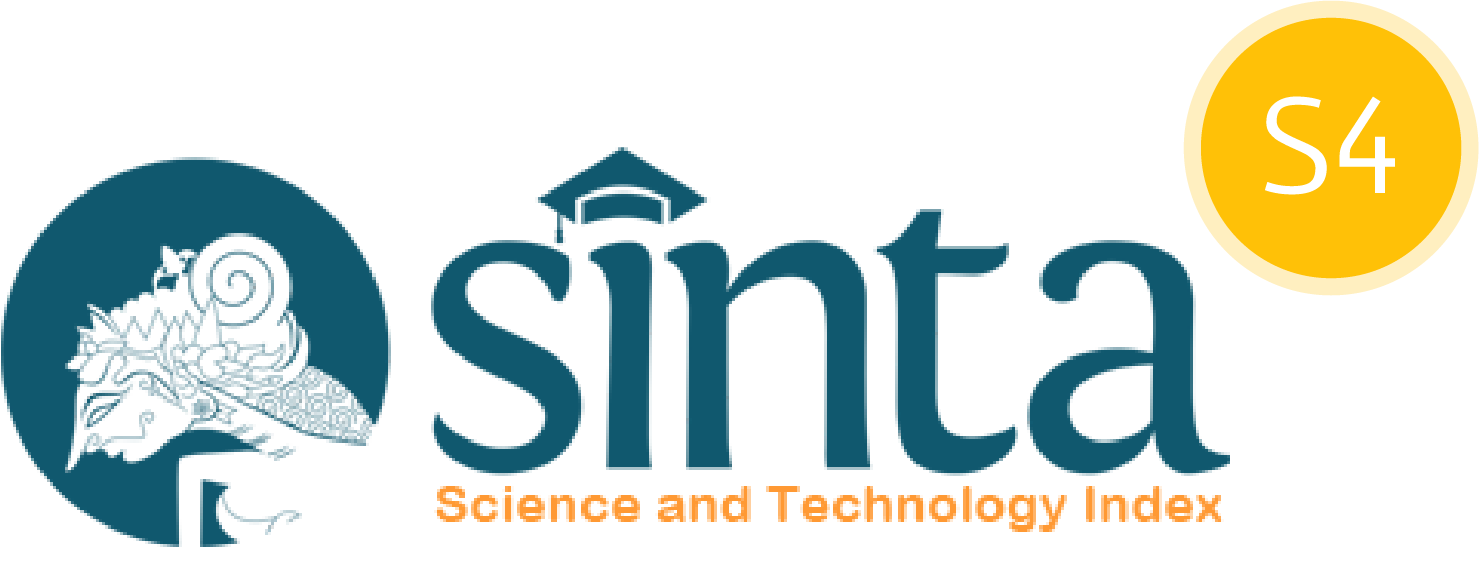Empowering Youth of Nagari Koto Tuo Through Population Information Systems and Digital Marketing for Household Products
DOI:
10.29303/ujcs.v6i2.1033Published:
2025-06-30Issue:
Vol. 6 No. 2 (2025): JuneKeywords:
Community Empowerment, Digital Marketing, Household Products, Information Systems, YouthArticles
Downloads
How to Cite
Downloads
Metrics
Abstract
This community service activity aims to increase the digital literacy and entrepreneurial capacity of youths in Nagari Koto Tuo, Harau District, by introducing a Population Information System and training on Digital Marketing for household products. Through a series of workshops held at the computer laboratory of Politeknik Pertanian Negeri Payakumbuh, participants were taught basic data management, website creation, and strategies for marketing local products through digital platforms. This program provides solutions to the lack of a structured population data system and the limited market reach of household businesses. The outcomes include the development of a prototype village population database system and enhanced participant capability in online marketing.
References
Agit, A. (2023) Tantangan UMKM Menghadapi Revolusi Industri 4.0, Pengantar Kewirausahaan (Dari Tradisional Ke Digital). Bandung: CV. MEDIA SAINS INDONESIA.
Alalwan, A.A., Dwivedi, Y.K. and Rana, N.P. (2017) ‘Social media in marketing: A review and analysis of the existing literature’, Telecommunications Policy, 41(2), pp. 129–141. Available at: https://doi.org/https://doi.org/10.1016/j.telpol.2016.11.002.
Alamsyah, A.I.S. (2024) ‘Peran Aplikasi Canva Dalam Mendukung Umkm Bersaing Di Era Digital’, Journal of Information System, Applied, Management, Accounting and Research, 8(2), pp. 343–350. Available at: https://doi.org/10.52362/jisamar.v8i2.1448.
Anggraeni, D. (2020) ‘Pelatihan Digitalisasi Produk Lokal Berbasis Media Sosial untuk Pemuda Desa’, Jurnal Pengabdian Masyarakat Ilmu Komputer, 2(3), pp. 201–207.
Chaffey, D. and Ellis-Chadwick, F. (2019) Digital Marketing. 7th ed. Pearson Education Limited.
Gunawan, D. and Siregar, H. (2022) ‘Peran Teknologi Informasi dalam Peningkatan Efisiensi Administrasi Desa’, Jurnal Ilmiah Teknologi Informasi, 18(1), pp. 1–8.
Kharisma, D., Saniati and Neneng (2022) ‘Aplikasi E-Commerce Untuk Pemesanan Sparepart Motor’, Jurnal Teknologi dan Sistem …, 3(1), pp. 83–89. Available at: https://jim.teknokrat.ac.id/index.php/sisteminformasi/article/view/1549%0Ahttps://jim.teknokrat.ac.id/index.php/sisteminformasi/article/viewFile/1549/596.
Kurniawan, H. (2021) ‘Penerapan Sistem Informasi Kependudukan Berbasis Web di Desa Digital’, . Jurnal Teknologi dan Sistem Informasi, 9(2), pp. 87–94. Available at: https://doi.org/https://doi.org/10.33365/jtsi.v9i2.990.
Nasir and Rahmi (2021) ‘Pemanfaatan Teknologi Informasi dalam Pelaksanaan Administrasi Perkantoran pada Kantor Kelurahan Tabaringan Kecamatan Ujung Tanah Kota Makassar’, Journal Mirai Manajemen, 6(2), pp. 288–295. Available at: https://doi.org/https://doi.org/10.37531/mirai.v6i2.1936.
Nugroho, R.A. (2020) ‘Strategi Komunikasi Pemasaran Digital Melalui Instagram dalam Meningkatkan Brand Awareness’, Jurnal Komunikasi dan Digital Media, 4(1), pp. 45–53.
Ramadhan, F.S., Suyanto and Nurjanah (2022) ‘Strategi Komunikasi Pemasaran Digital pada Media Sosial Instagram dalam Mempromosikan Brand “Everyday Is Saturday”’, NeoRespublica: Jurnal Ilmu Pemerintahan, 4(1), pp. 83–91. Available at: https://doi.org/10.52423/neores.v4i1.21.
Sujono, S. (2018) ‘Penerapan Aplikasi Sistem Informasi Kependudukan Berbasis Web Pada Kantor Kepala Desa Puput Kec. Simpangkatis’, Simetris: Jurnal Teknik Mesin, Elektro dan Ilmu Komputer, 9(1), pp. 707–716. Available at: https://doi.org/10.24176/simet.v9i1.2078.
Winata, S.M. and Nugraha, N.R. (2024) ‘Transformasi Digital Dalam Pendidikan Indonesia Untuk Menghadapi Era Industri 4.0: Tantangan Dan Peluang’, Sindoro CENDIKIA PENDIDIKAN, 4(3), pp. 48–58. Available at: https://doi.org/https://doi.org/10.9644/sindoro.v4i5.3371.
Zulfikar, M. and Fitria, A. (2021) ‘Transformasi Digital UMKM dalam Menghadapi Era Industri 4.0’, Jurnal Ilmiah Ekonomi dan Bisnis, 18(1), pp. 33–40.
Author Biographies
Syukriadi, Program Studi Teknologi Rekayasa Komputer, Jurusan Rekayasa Pertanian dan Komputer, Politeknik Pertanian Negeri Payakumbuh, Lima Puluh Kota, Payakumbuh
Amrizal, Program Studi Teknologi Rekayasa Komputer, Jurusan Rekayasa Pertanian dan Komputer, Politeknik Pertanian Negeri Payakumbuh, Lima Puluh Kota, Payakumbuh
Hendra, Program Studi Teknologi Rekayasa Komputer, Jurusan Rekayasa Pertanian dan Komputer, Politeknik Pertanian Negeri Payakumbuh, Lima Puluh Kota, Payakumbuh
Rabby Nazli, Program Studi Teknologi Rekayasa Komputer, Jurusan Rekayasa Pertanian dan Komputer, Politeknik Pertanian Negeri Payakumbuh, Lima Puluh Kota, Payakumbuh
Ega Evinda Putri, Program Studi Teknologi Rekayasa Komputer, Jurusan Rekayasa Pertanian dan Komputer, Politeknik Pertanian Negeri Payakumbuh, Lima Puluh Kota, Payakumbuh
Widya Febrina, Program Studi Teknologi Rekayasa Komputer, Jurusan Rekayasa Pertanian dan Komputer, Politeknik Pertanian Negeri Payakumbuh, Lima Puluh Kota, Payakumbuh
License
Copyright (c) 2025 Syukriadi, Amrizal, Hendra, Rabby Nazli, Ega Evinda Putri, Widya Febrina

This work is licensed under a Creative Commons Attribution 4.0 International License.
You are free to:
- Share — copy and redistribute the material in any medium or format for any purpose, even commercially.
- Adapt — remix, transform, and build upon the material for any purpose, even commercially.
The licensor cannot revoke these freedoms as long as you follow the license terms.
Under the following terms:
- Attribution — You must give appropriate credit, provide a link to the license, and indicate if changes were made. You may do so in any reasonable manner, but not in any way that suggests the licensor endorses you or your use.
- No additional restrictions — You may not apply legal terms or technological measures that legally restrict others from doing anything the license permits.
Notices:
You do not have to comply with the license for elements of the material in the public domain or where your use is permitted by an applicable exception or limitation.
No warranties are given. The license may not give you all of the permissions necessary for your intended use. For example, other rights such as publicity, privacy, or moral rights may limit how you use the material.




